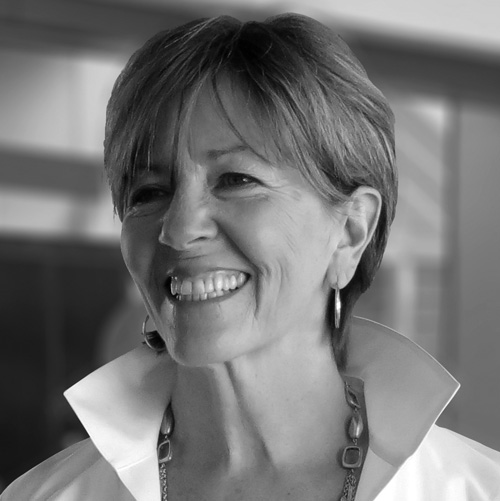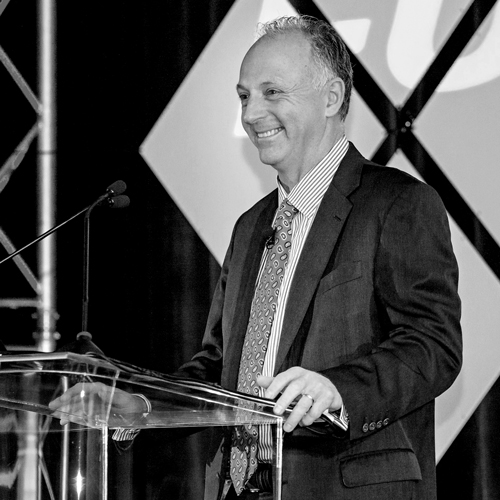Historically, shopping was largely structured around women and providing the most efficient experience for them. For decades, men have been an afterthought. When I talked to my guy friends and colleagues, they had similar feelings and just didn’t want to deal with the hassle of traditional stores.
To me it struck a chord that men want convenience but also an experience that is designed specifically for them. I realized that we needed to have a store concept that let us tackle the problem head on and re-masculinize the shopping experience so it didn’t feel like shopping.

From an experience standpoint, we looked at everything from lighting to music, drinks to couches, customer service to events. I hated the thought of missing Saturday afternoon college football games, waiting for the sales rep to have time to deal with me, and always feeling like he’s looking over my shoulder to the next person. So let’s have football on in all of our showrooms, one-on-one private appointments, and a beer or a scotch or a glass of wine so you can relax and enjoy yourself.
When I was doing strategy consulting, I learned how to go into an industry that I knew nothing about and methodically put together the right questions and action steps to both learn the industry quickly and then start to make the appropriate strategic decisions to make the right moves.
It always starts with the team for me. My cofounder, Peyton Jenkins, was my best friend from the University of Virginia. He had been a director of leasing for a family commercial real-estate firm in Washington, DC, for about six years. He had worked on a plethora of leases. He brought that skill set to the table of retail strategy and how to identify the right locations, negotiate the right leases, and design amazing spaces.
We really designed everything largely ourselves. Our thought was to bring our own element of creativity, but not try to recreate the wheel. We spent a lot of time in high-end restaurants or hotels and noticed details that we liked. Peyton often scours the pages of Pinterest for innovative design concepts and spends many weekends wandering through antique shops or other cool stores for inspiration. He is definitely the creative genius behind the design of our showrooms. We found our first space in the heart of New York City’s Flatiron district; we bought one-way tickets overseas to meet with fabric mills and factories around the world. We learned every single step of the entire company.
The bar and the body scanner are all about the customer, in different ways, but with the same end goal. For someone like me, who hates shopping, you have to be comfortable in one of our stores. Our business model is predicated on trying to provide the best quality for the lowest possible price. To cut down on advertising, we needed to rely on word-of-mouth sales, which would come if we created a good enough experience that guys would want to go tell their friends about it. The bar for us was kind of a symbol of universal masculinity. No matter who you are or where you come from, a guy can relate to the thought of the whole paradigm of the bartender and the bar. You sit down, talk about your week; you’re letting your guard down.
The 3-D body scanner has the same intention. If we were to follow all of the measurements done on Savile Row [a London street known for bespoke tailors] by hand, it would take about thirty-five minutes. Not many guys are going tell their friends or colleagues, “I just had the best time getting measured by this tailor for about forty minutes.” But they will go back and talk about this amazing new technology that took their measurements in about forty-five seconds.
My approach is customer driven. I challenge the team to always put the customer first in every decision. Whether we are deciding what technology are we investing in, where we put our next showroom, or what new products we roll out, we think collectively about what the impact will be on our customers.
One of the biggest problems in the fashion industry, particularly in the luxury space, is that so much of it is about the ego of the designer instead of the needs of the customer. You can see it right in their labels, promoting their own names, but it extends to their collections and their vision. We tried to flip this way of thinking upside down. To me, it is not about me at all. It is about the customer and our product. We help curate our fabrics so that we are producing and supplying the best fabrics in the world with excellent quality and fit, but the customer is the real designer. If you want a blazer eighteen months after the industry says it is on trend, you should be able to get it.
We are going to be launching The Alton Lane Mobile Showroom in the coming months. This is one of our newest concepts that I am really excited about. It is the first of its kind in this category. We bought a thirty-one-foot classic Airstream trailer and we redesigned and rebuilt it from scratch, essentially condensing all of the benefits of our showroom. It has our 3-D scanning technology, a built-in bar, hidden rooms, flatscreen TVs, and custom leather benches. It allows us to bring our experience to men across the country in a brand new way. We have a platform that makes it easy for the customer to design something that they really want and will look good in. It’s all about them.

